Each year, the American Association for the Advancement of Science elects distinguished scientists, engineers and innovators to become AAAS Fellows. Seven faculty members from the University of Tennessee, Knoxville, were awarded this lifetime honor as members of the recently announced 2023 class of AAAS Fellows.
Elected faculty are Rigoberto Advincula, Takeshi Egami, Heidi Goodrich-Blair, Sergei Kalinin, Keith Kline, Anthony Mezzacappa and Michela Taufer. They represent a wide range of disciplines across the College of Arts and Sciences, the UT Institute of Agriculture and the Tickle College of Engineering. They join a distinguished group of UT faculty who have been elected AAAS Fellows in past years.
“The AAAS cuts across many, many disciplines, looking at science as a whole,” said Egami, a longtime pioneer in studying atomic-scale dynamics of noncrystalline matter.
The AAAS Fellow designation recognizes people who have made an impact both within and outside their specific fields. “Making an impact on other fields matters. This is an important way we advance,” said Kalinin, who works at the intersection of machine learning and experimental physical sciences. “This is a special honor because we see that our work resonates in the broader scientific community.”
“We are so proud of our newly elected AAAS Fellows,” said Deborah Crawford, vice chancellor for research, innovation, and economic development. “They are pioneers in their respective fields and help ensure that UT remains a world-class research university.”
Rigoberto Advincula, Department of Chemical and Biomolecular Engineering and Department of Materials Science and Engineering
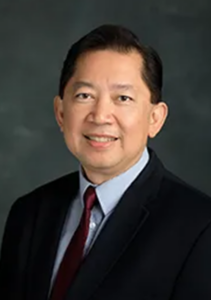 Polymer expert Rigoberto Advincula is the UT-Oak Ridge National Laboratory Governor’s Chair for Advanced and Nanostructured Materials and leader of the Polymer Group at ORNL’s Center for Nanophase Materials Sciences. He is a fellow of the National Academy of Inventors, the American Chemical Society and the Royal Society of Chemistry.
Polymer expert Rigoberto Advincula is the UT-Oak Ridge National Laboratory Governor’s Chair for Advanced and Nanostructured Materials and leader of the Polymer Group at ORNL’s Center for Nanophase Materials Sciences. He is a fellow of the National Academy of Inventors, the American Chemical Society and the Royal Society of Chemistry.
“Becoming an AAAS Fellow highlights not just my contributions but what my group has accomplished,” he said. “We design different types of polymer architectures and nanomaterials. We’re working now with digital manufacturing to enhance performance and sustainability, and to discover new applications such as biotechnologies, parts for connected vehicle technologies like sensors and how to use thin-film coatings to strengthen materials against damage.
“I am passionate about training and mentoring graduate and undergraduate students — the next generation of scientists — to help them have successful careers,” he added. “I aim to help them gain soft skills so they can be confident in choosing STEM as a career, while they build hard skills that industry or academia will be looking for, like how to work with state-of-the-art equipment. For example, I directly involve them with nanocomposites and in 3D printing.”
Takeshi Egami, Department of Materials Science and Engineering
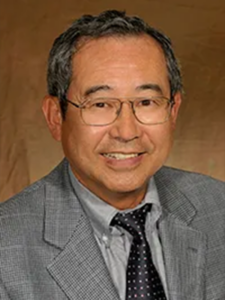 Takeshi Egami is a UT-ORNL Distinguished Scientist, professor, and director emeritus of the Shull Wollan Center/Joint Institute for Neutron Sciences. He is a past recipient of the American Crystallographic Association’s Bertram Eugene Warren Diffraction Physics Award.
Takeshi Egami is a UT-ORNL Distinguished Scientist, professor, and director emeritus of the Shull Wollan Center/Joint Institute for Neutron Sciences. He is a past recipient of the American Crystallographic Association’s Bertram Eugene Warren Diffraction Physics Award.
Early in his career, Egami realized that most theories and experimental tools in condensed-matter physics and materials science were developed for crystalline materials. “But liquids, glasses and humans, too, are not crystalline. Water in particular is vital for life, yet it’s still a mystery in its physics,” he said. “It is an important target for me.”
Egami developed new approaches to study the atomic structure and dynamics in disordered systems using X-ray and neutron scattering by transforming the data from reciprocal space to real space. He has also developed theories on liquids and glasses.
“I’m grateful to UT, ORNL and the Department of Energy for enabling me to focus on fundamental liquid-state physics,” he said. “I believe it’s important to continue fundamental yet out-of-the-box research to take us to the next stage. Bringing the study of disordered systems into the realm of biology is a new horizon for exploration.”
Heidi Goodrich-Blair, Department of Microbiology
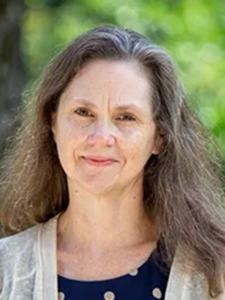 Heidi Goodrich-Blair is the David and Sandra White Professor and head of the microbiology department. She is an American Society for Microbiology Fellow.
Heidi Goodrich-Blair is the David and Sandra White Professor and head of the microbiology department. She is an American Society for Microbiology Fellow.
“All animals coexist with microbes that are essential to our development, behavior, nutrition and metabolism,” she said. “My work has developed a model system between a soil-dwelling nematode and the bacterium that colonizes its intestine to investigate questions about animal-microbe relationships. For example, at a molecular level, what distinguishes beneficial and harmful microbes? How can we promote the beneficial while combating the detrimental? Using our model, my team has made specific discoveries that provide insights into these types of questions.”
Goodrich-Blair also aims to combat antibiotic resistance by investigating tailocins, which bacteria produce to kill other bacteria. “Tailocins are molecular machines that bind to specific target microbes and punch holes in their membranes,” she said. “If we can harness tailocins, we can kill bad bacteria without harming good bacteria.
“Amazing students and postdocs have made my research and contributions possible,” Goodrich-Blair added. “The women in science in the generation before me, and their stellar scientific contributions, have also helped pave the way for me to succeed.”
Sergei Kalinin, Department of Materials Science and Engineering
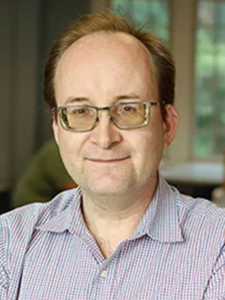 Weston Fulton Professor Sergei Kalinin also serves as the chief scientist working in artificial intelligence and machine learning for the physical sciences at Pacific Northwest National Laboratory. Before joining UT, he spent a year with the Amazon special projects team, exploring real-world industry challenges firsthand, and he earlier spent 20 years at ORNL.
Weston Fulton Professor Sergei Kalinin also serves as the chief scientist working in artificial intelligence and machine learning for the physical sciences at Pacific Northwest National Laboratory. Before joining UT, he spent a year with the Amazon special projects team, exploring real-world industry challenges firsthand, and he earlier spent 20 years at ORNL.
“I use machine learning to solve problems in physics,” Kalinin said. “Connecting machine learning with real-world materials and devices requires a combination of skill sets. I have been very lucky to work with strong collaborative teams at the national labs and at UT.
“Together we are integrating machine learning and microscopy to enable a new generation of materials and accelerate the discovery process. It provides what had been a missing link between synthesizing new materials and characterizing them to figure out what we made and why they are useful.”
Kalinin has contributed to multiple types of advanced microscopy including multifrequency scanning probe, electromechanical, piezoresponse force and electrochemical strain microscopy.
Keith Kline, Department of Biosystems Engineering and Soil Science
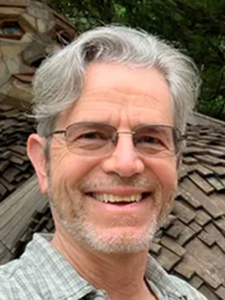 Keith Kline spent 24 years working with partners on the frontiers of deforestation in Africa and Latin America. “I was fortunate to collaborate with governments and stakeholders to establish systems of protected areas and long-term community management concessions to conserve large tracts of public forests, savannahs and wetlands,” Kline said.
Keith Kline spent 24 years working with partners on the frontiers of deforestation in Africa and Latin America. “I was fortunate to collaborate with governments and stakeholders to establish systems of protected areas and long-term community management concessions to conserve large tracts of public forests, savannahs and wetlands,” Kline said.
“My work involves helping communities identify opportunities to improve natural resource management based on local needs and priorities. I was raised on a farm. My connections to the land and family who work it complement my international fieldwork and inform my approach to community-based natural resource management.
“I’m looking forward to working with UT and ORNL on water and forest management in East Tennessee communities.”
Kline will also continue research to align land-use change models more closely with science-based parameters and community contexts.
Anthony Mezzacappa, Department of Physics and Astronomy
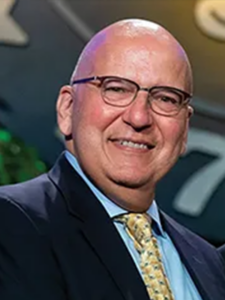 Anthony Mezzacappa is the Newton W. and Wilma C. Thomas Chair in Theoretical and Computational Astrophysics and a College of Arts and Sciences Excellence Professor. He is also an American Physical Society Fellow and former director of the UT-ORNL Joint Institute for Computational Sciences.
Anthony Mezzacappa is the Newton W. and Wilma C. Thomas Chair in Theoretical and Computational Astrophysics and a College of Arts and Sciences Excellence Professor. He is also an American Physical Society Fellow and former director of the UT-ORNL Joint Institute for Computational Sciences.
“I focus on understanding our cosmic origins by studying the death throes of massive stars,” said Mezzacappa.
Those events, called core-collapse supernovae, are a source of gravitational waves and many of the known elements. “My group develops the fundamental theory and equations for the evolution of the neutrino particles responsible for generating core-collapse supernovae,” Mezzacappa said. “Then we develop numerical methods to code those equations into software to simulate supernovae.”
His group’s numerical methods have informed research in other fields and applications, including nuclear reactor physics.
Leadership class supercomputers are key for computationally intensive supernova simulations. For more than a decade, Mezzacappa participated in a community of experts advising the Department of Energy on the ongoing evolution and construction of more powerful supercomputers.
“I’m passionate about advancing computational science writ large,” Mezzacappa said. “The honor of becoming an AAAS Fellow feels like recognition for computational science.”
Michela Taufer, Min H. Kao Department of Electrical Engineering and Computer Science
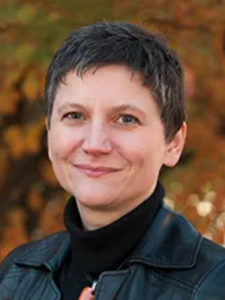 Michela Taufer is the Jack Dongarra Professor in High-Performance Computing. She also serves as editor-in-chief for the journal Future Generation Computer Systems. She has received the IEEE R&D 100 and Technical Community on Parallel Processing Outstanding Service and Contribution Awards, and she chaired the 2019 IEEE/ACM Supercomputing Conference.
Michela Taufer is the Jack Dongarra Professor in High-Performance Computing. She also serves as editor-in-chief for the journal Future Generation Computer Systems. She has received the IEEE R&D 100 and Technical Community on Parallel Processing Outstanding Service and Contribution Awards, and she chaired the 2019 IEEE/ACM Supercomputing Conference.
“My research focuses on enhancing capabilities and trustworthiness of high-performance computing and cloud computing systems to better support experimental and simulation-based research across various scientific domains,” Taufer said. “My group develops algorithms that increase simulations’ accuracy and ensure they can be validated and replicated.”
Taufer’s interdisciplinary collaborations take a variety of shapes, including creating computation methods to help predict virus replication in fish populations and codeveloping the Quake-Catcher Network to benchmark the accuracy of strategically located low-cost sensors for monitoring seismic events. “My goal is to bridge the gap between computational results and real-world applications, generating scientifically valid and practically useful insights,” she said.
She looks forward to integrating advanced AI and machine learning algorithms into high-performance computing. “This intersection is poised to revolutionize fields like drug discovery, environmental science and materials engineering,” said Taufer.
–
MEDIA CONTACT:
Jennifer Johnson (865-974-4448, jenniferjohnson@utk.edu)
Jen Roder (865-974-2445, jroder@utk.edu)
